Whether it’s wet grass, sticky ground or long draws on busy roads, trailers are often left to bear the brunt of it.
To limit unforeseen issues during the season, contractors and farmers should give trailers the once-over now before the workload arrives and on a regular basis throughout the season.
Two key questions should be kept in mind. One, is it road legal and safe? And two, is everything working as it should? Contractors should take the time to familiarise themselves with RSA regulations and be fully compliant.
1 Coupling
The traditional towing eye needs to be inspected regularly and replaced if badly worn. Any replacement welding should be carried out by a certified professional. Nowadays, more contractors are moving towards ball and spoon-type coupling. The benefits are reduced wear and much less chance of decoupling.
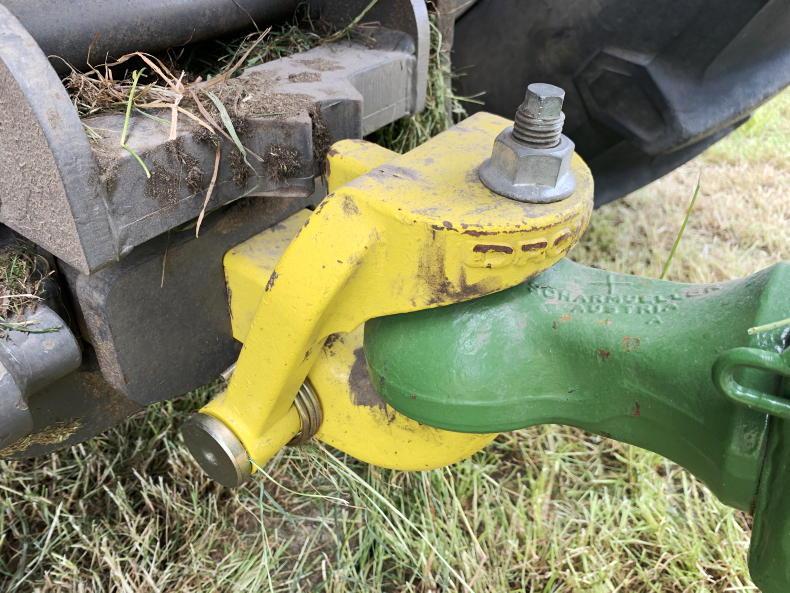
The ball and spoon coupling system offers reduced wear over the traditional hook and towing eye.
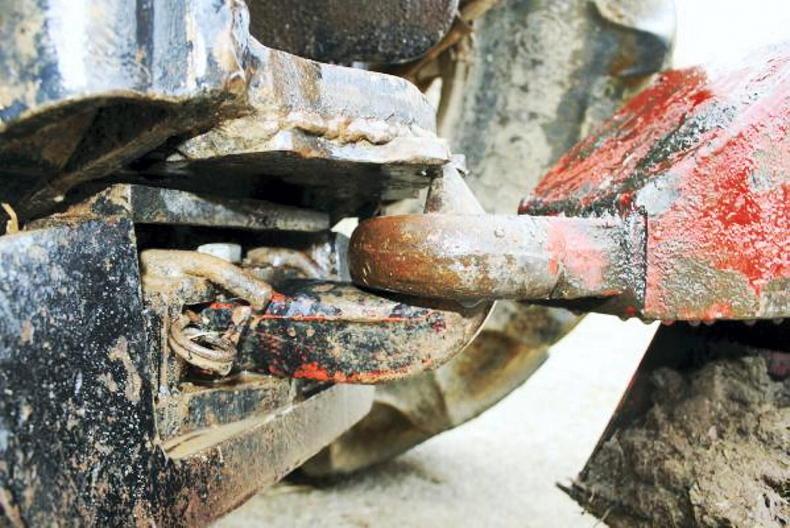
Both the hook and eye should be checked for wear.
2 Running gear and chassis
Axles tend to spend much of their time under load. It’s important to grease the required points regularly during the season and inspect the running gear thoroughly for wear and damage. Worn components will eventually fail if ignored.
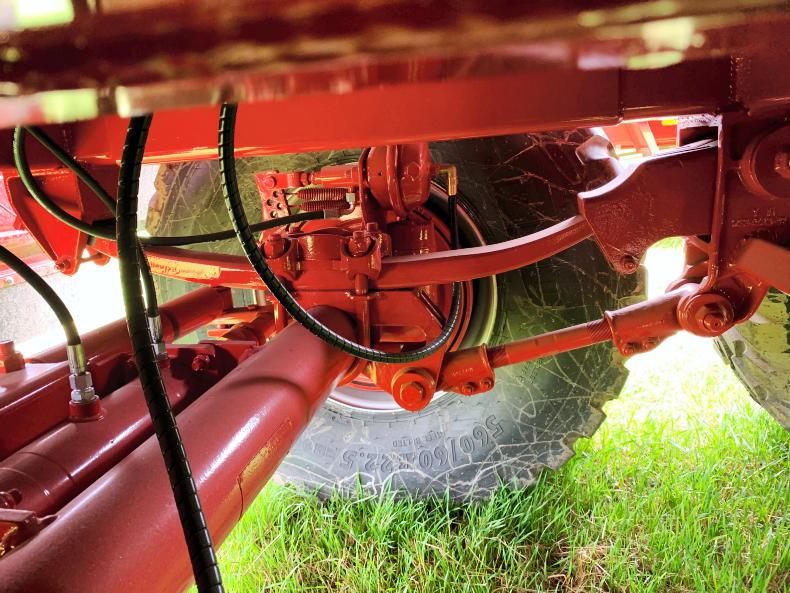
All running gear, ie springs, axle U-bolts should be checked frequently.
Examine springs for cracks, loose U-bolts and the axle itself for stress fractures. Grease all bushings, hinges and rockers regularly. Have a good look around the chassis and running gear for cracks or damage. Respond to cracks, particularly in the chassis or tipping structure, with urgent repair.
It is vital that steering axles are checked and receive regular lubrication given the degree of moving components. Passive steering systems should be tested to ensure they are locking in position for road travel.
All running gear, ie springs, axle U-bolts should be checked frequently.
3 Brakes
Check brake function and ensure full engagement and disengagement. It’s not uncommon for brakes to stick, especially while unloaded, which can cause tyre flat spots if unnoticed.
Slack adjusters should be checked. The older manual type should be adjusted if the braking effort has decreased. Braking rules differ depending on the speed of the tractor towing the trailer and the speed the trailer was designed to be towed at.
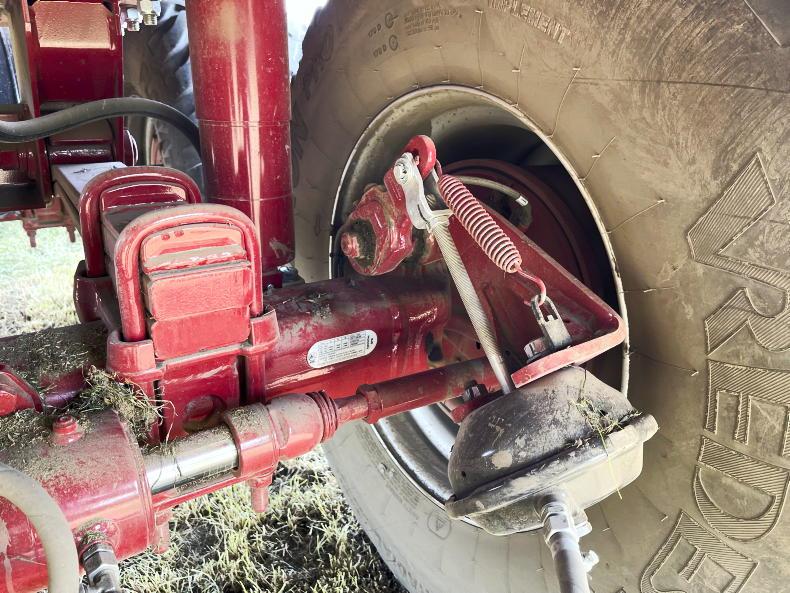
Brakes should be fully functional and correctly adjusted.
A trailer designed to be towed over 40km/h must be fitted with load-sensing air brakes, a breakaway system, a parking brake and an authorisation plate. Agricultural trailers manufactured before 1 January 2016 that are not designed to be drawn at a speed of more than 40km/h may be fitted with a second coupling device, such as a chain or wire rope. Any trailers that can be towed at speeds over 60km/h should be equipped with ABS. All trailers must be fitted with a parking brake.
4 Tyres and studs
Tyre pressures can drop during winter storage, so check that all are equally inflated to the recommended pressure. Different tyres run on different pressures, from commercial spec super-singles (may operate on pressures as high as 100psi), to low ground pressure flotation tyres operating as low as 15psi. It’s vital to check for signs of cuts, bulges or excessive wear that could lead to failure. Wheel nuts should be correctly torqued before and throughout the seasons.
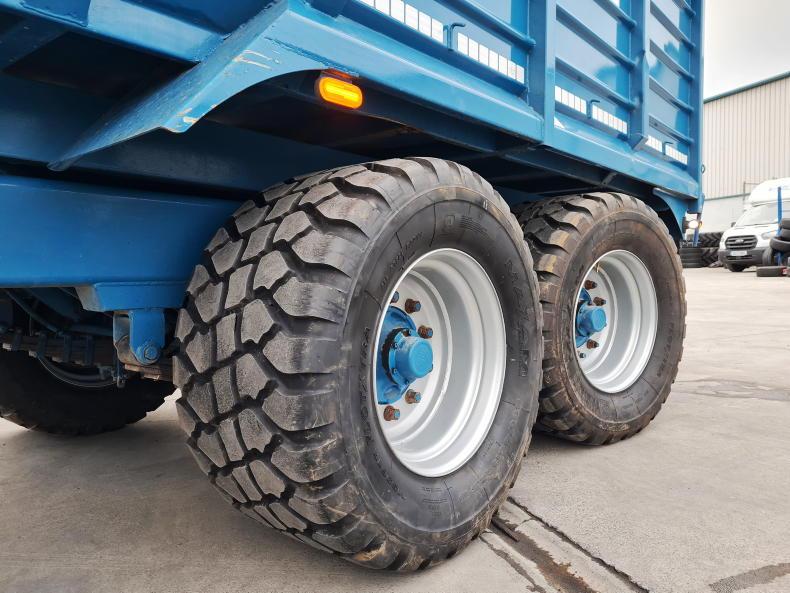
All tyres should be in good order and wheel studs torqued in accordance to the manufacturers guidelines.
5 Lights and markers
It is critical all trailer lights, side markers and reflectors are present and working. Depending on combined tractor and trailer lengths, the RSA has specific standards relating to side lights and reflective side markings.
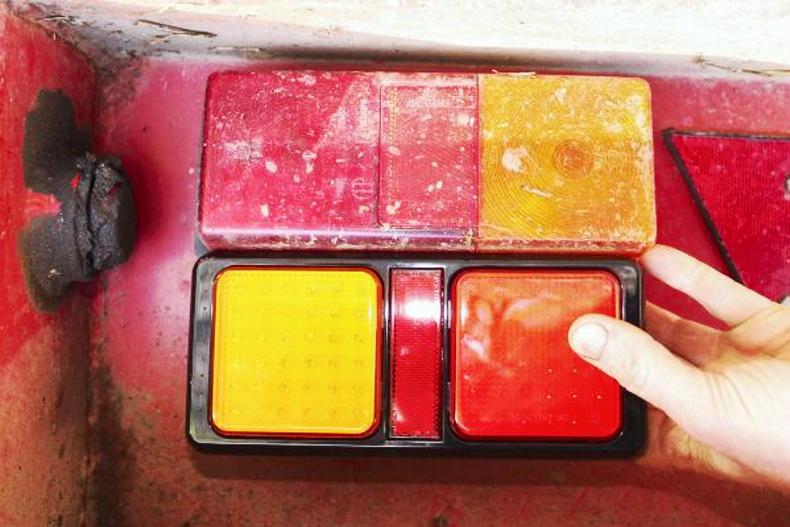
If not already fitted, consider replacing traditional tail lighting systems for the more reliable LED types.
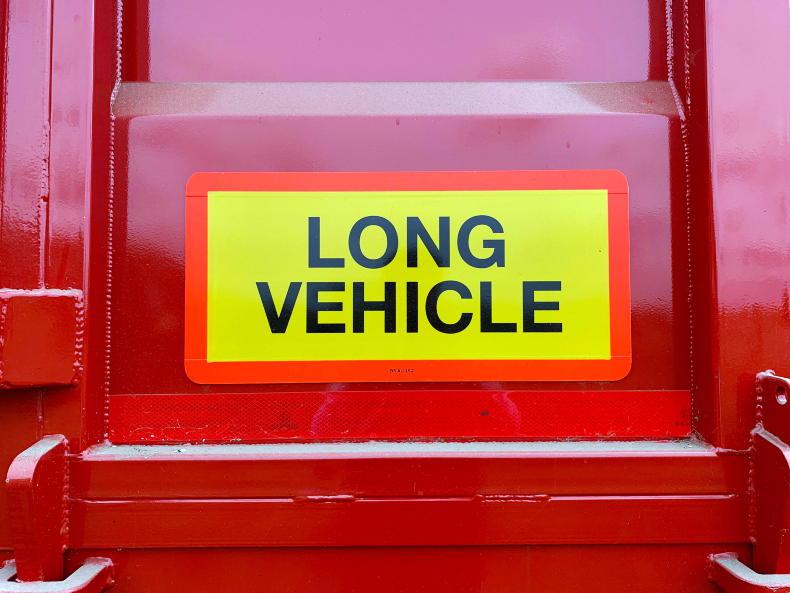
Tractors and trailers with a combined length over 13m should have a “long vehicle” marker on the rear.
Tractor and trailer setups over 10m must be fitted with amber side lights and reflective side markings, while if over 13m combined, should have a “long vehicle” marker on the rear. Reflective markings should cover 80% of the trailer. On the rear, a red reflective strip across the width of the trailer is required. A speed plate should also be fitted to the rear of the trailer. Illuminated number plates are also a requirement.
If in doubt contact the RSA or visit RSA.ie for further information in relation to axle weights/speeds, brakes and lighting standards.
Whether it’s wet grass, sticky ground or long draws on busy roads, trailers are often left to bear the brunt of it.
To limit unforeseen issues during the season, contractors and farmers should give trailers the once-over now before the workload arrives and on a regular basis throughout the season.
Two key questions should be kept in mind. One, is it road legal and safe? And two, is everything working as it should? Contractors should take the time to familiarise themselves with RSA regulations and be fully compliant.
1 Coupling
The traditional towing eye needs to be inspected regularly and replaced if badly worn. Any replacement welding should be carried out by a certified professional. Nowadays, more contractors are moving towards ball and spoon-type coupling. The benefits are reduced wear and much less chance of decoupling.

The ball and spoon coupling system offers reduced wear over the traditional hook and towing eye.

Both the hook and eye should be checked for wear.
2 Running gear and chassis
Axles tend to spend much of their time under load. It’s important to grease the required points regularly during the season and inspect the running gear thoroughly for wear and damage. Worn components will eventually fail if ignored.

All running gear, ie springs, axle U-bolts should be checked frequently.
Examine springs for cracks, loose U-bolts and the axle itself for stress fractures. Grease all bushings, hinges and rockers regularly. Have a good look around the chassis and running gear for cracks or damage. Respond to cracks, particularly in the chassis or tipping structure, with urgent repair.
It is vital that steering axles are checked and receive regular lubrication given the degree of moving components. Passive steering systems should be tested to ensure they are locking in position for road travel.
All running gear, ie springs, axle U-bolts should be checked frequently.
3 Brakes
Check brake function and ensure full engagement and disengagement. It’s not uncommon for brakes to stick, especially while unloaded, which can cause tyre flat spots if unnoticed.
Slack adjusters should be checked. The older manual type should be adjusted if the braking effort has decreased. Braking rules differ depending on the speed of the tractor towing the trailer and the speed the trailer was designed to be towed at.

Brakes should be fully functional and correctly adjusted.
A trailer designed to be towed over 40km/h must be fitted with load-sensing air brakes, a breakaway system, a parking brake and an authorisation plate. Agricultural trailers manufactured before 1 January 2016 that are not designed to be drawn at a speed of more than 40km/h may be fitted with a second coupling device, such as a chain or wire rope. Any trailers that can be towed at speeds over 60km/h should be equipped with ABS. All trailers must be fitted with a parking brake.
4 Tyres and studs
Tyre pressures can drop during winter storage, so check that all are equally inflated to the recommended pressure. Different tyres run on different pressures, from commercial spec super-singles (may operate on pressures as high as 100psi), to low ground pressure flotation tyres operating as low as 15psi. It’s vital to check for signs of cuts, bulges or excessive wear that could lead to failure. Wheel nuts should be correctly torqued before and throughout the seasons.

All tyres should be in good order and wheel studs torqued in accordance to the manufacturers guidelines.
5 Lights and markers
It is critical all trailer lights, side markers and reflectors are present and working. Depending on combined tractor and trailer lengths, the RSA has specific standards relating to side lights and reflective side markings.

If not already fitted, consider replacing traditional tail lighting systems for the more reliable LED types.

Tractors and trailers with a combined length over 13m should have a “long vehicle” marker on the rear.
Tractor and trailer setups over 10m must be fitted with amber side lights and reflective side markings, while if over 13m combined, should have a “long vehicle” marker on the rear. Reflective markings should cover 80% of the trailer. On the rear, a red reflective strip across the width of the trailer is required. A speed plate should also be fitted to the rear of the trailer. Illuminated number plates are also a requirement.
If in doubt contact the RSA or visit RSA.ie for further information in relation to axle weights/speeds, brakes and lighting standards.









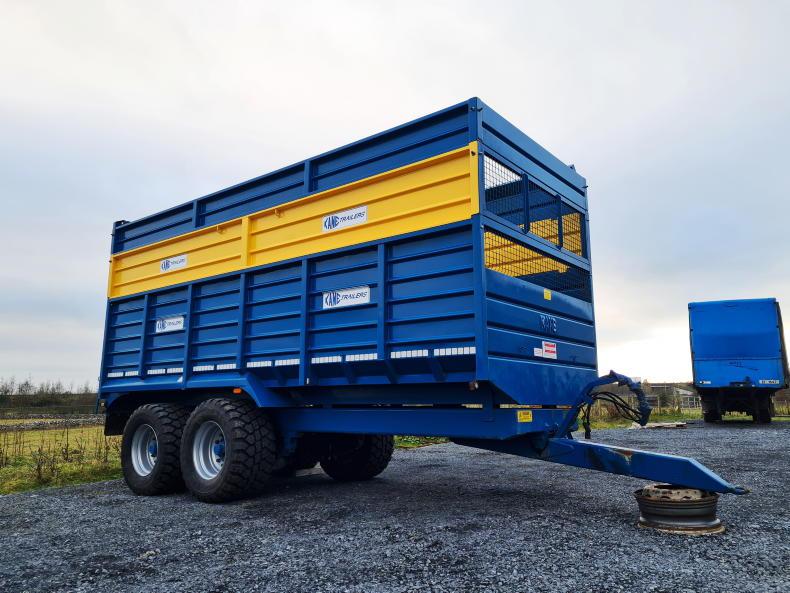




 This is a subscriber-only article
This is a subscriber-only article






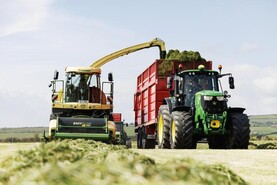



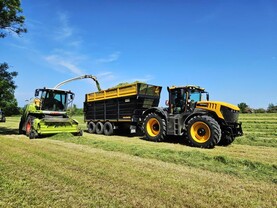
SHARING OPTIONS: